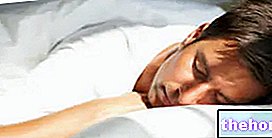Feet are defined flat when they have a less pronounced arch than normal or even absent, due to the loosening of the tendons in the area.
Flat feet are a relatively common condition that can affect up to 30% of the population.
Often, but not only, children are affected from birth, although it is usually difficult to notice this anomaly before the age of two.
The flat foot can be flexible, that is, such only when the foot is placed on the ground, or rigid, when it occurs in any case. The first is the most common form.
This condition often causes no symptoms but one in 10 people experience sensations of pain or discomfort that can be alleviated with some specific exercises.
errors, obesity, arthritis, diabetes, trauma or injury to the foot and / or ankle and use of inappropriate footwear.
Aging and pregnancy can also contribute to their development, as can neurological or muscular diseases such as cerebral palsy, muscular dystrophy or spina bifida.
Usually both feet are affected but it is also possible that only one is affected.
Physical manifestations
This physical condition does not always generate pain, but in cases where the absence of the plantar arch is symptomatic, the most common complaints usually focus on the heel, ankles, lower legs, knees and lumbar area.
In addition to the sensation of pain localized in these areas, swelling in the inner part of the ankles and musculoskeletal problems in the feet can occur.
specially created to support the arches and offer extra cushioning.
In addition, there are several exercises indicated to reduce any pain and discomfort.
The ideal would be to include them in your daily routine or do them at least three times a week.
Heel stretch
- From a standing position, place your hands on a wall or chair at shoulder or eye level.
- Bring one leg forward and the other extended behind you.
- Press both heels firmly to the floor.
- Keeping the spine straight, bend the front leg and push yourself against the wall or support, trying to feel a stretch in the back leg and the Achilles tendon.
- Maintain the position for 30 seconds.
- Repeat 4 times for each side.
Rotations with tennis balls
- Sit in a chair and place a tennis ball under your right foot.
- Keep the spine straight and roll the ball under the foot, focusing on the arch.
- Continue for 2-3 minutes.
- Repeat the movement with the opposite foot.
Arch lifts
- Stand up straight and with your feet hip-width apart.
- Making sure to keep your toes in contact with the floor, shift all of your body weight to the outer edges of your feet as you raise your arches as much as possible.
- Return to the starting position.
- Perform 2 or 3 sets of 10 - 15 repetitions.
Toe lifts
- From a standing position, raise your heels as high as you can.
- Stand with your heels up for 5 seconds, then bring them back to the floor.
- Perform 2 or 3 sets of 15 - 20 repetitions.
Elongations in elevation
- Step onto a step or step tool, placing the left foot fully forward, and the left foot on the lower edge.
- Use your left foot to stay balanced as you lower your right foot so that your heel drops slightly off the step.
- Slowly raise your right heel as high as you can, focusing on strengthening the arch.
- Rotate the arch inward as the knee and calf rotate slightly to the side.
- Slowly lower your back until you return to the starting position.
- Perform 2 or 3 sets of 10 - 15 repetitions on both sides.
Contractions with towel
- Sit in a chair and place a towel under your feet.
- Keep your heels fixed on the floor and in the meantime bend your fingers to wrinkle the towel.
- Press your toes against the arch, hold the position for a few seconds and relax.
- Perform 2 or 3 sets of 10 - 15 repetitions.
Toe lift
- From a standing position, press your right big toe to the floor.
- Lift the other four fingers and hold them up for 5 seconds.
- Return them to the floor and lift the big toe.
- Perform each operation 5 to 10 times.
- Repeat the exercise with the opposite foot.
- This exercise can also be implemented in Tree Pose, Standing Forward Bend or Standing Split yoga positions.
This exercise also helps to stand on tiptoe.
It is also useful to perform the exercises to improve balance.
The bosu ball workout is also very useful.



























